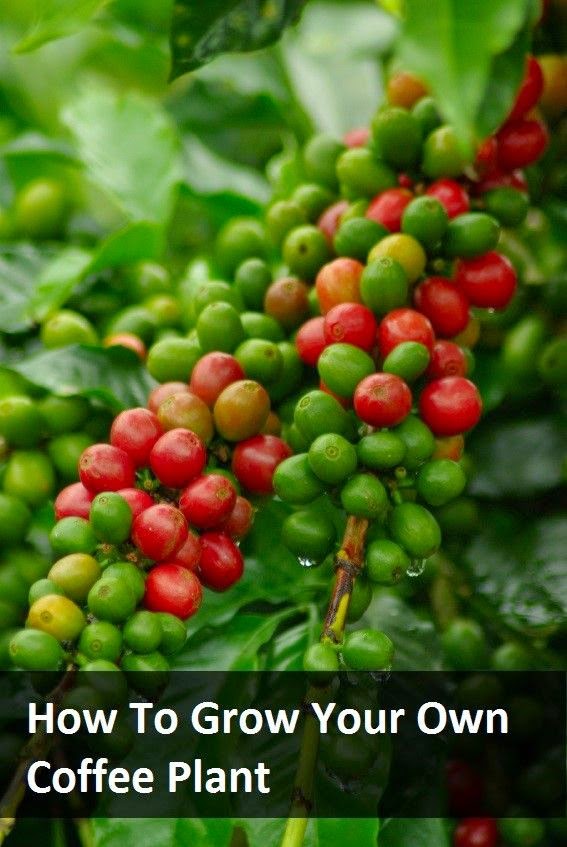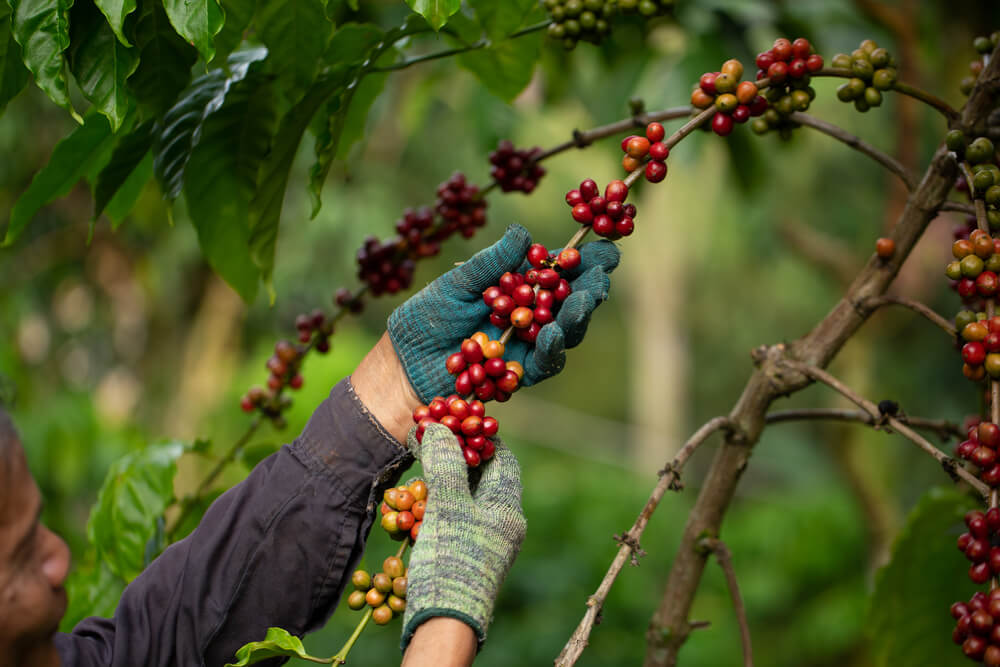Choosing the Right Coffee Plant Variety for Your Climate
When it comes to growing coffee beans at home, selecting the right coffee plant variety is crucial for success. With over 100 different species of coffee plants, each with its unique characteristics and growing requirements, choosing the right variety can be overwhelming. However, by understanding the different types of coffee plant varieties and their suitability for various climates, you can make an informed decision and increase your chances of growing healthy and productive coffee plants.
Coffee plants are typically classified into two main categories: Arabica and Robusta. Arabica plants are known for their high-quality beans and are more sensitive to temperature and humidity, making them more suitable for cooler and more humid climates. Robusta plants, on the other hand, are more disease-resistant and can thrive in warmer and drier climates. Within these two categories, there are numerous sub-varieties, each with its unique characteristics and growing requirements.
To select the best coffee plant variety for your region and growing conditions, consider factors such as temperature, humidity, and sunlight. If you live in a cooler and more humid climate, an Arabica variety such as ‘Colombian Supremo’ or ‘Ethiopian Yirgacheffe’ may be a good choice. If you live in a warmer and drier climate, a Robusta variety such as ‘Conilon’ or ‘Liberica’ may be more suitable. Additionally, consider factors such as soil quality, altitude, and wind protection when selecting a coffee plant variety.
By choosing the right coffee plant variety for your climate and growing conditions, you can ensure that your coffee plants thrive and produce high-quality beans. In the next section, we’ll discuss the importance of preparing the perfect environment for your coffee plants to thrive.
Preparing the Perfect Environment for Your Coffee Plants
Creating an optimal growing environment is crucial for the health and productivity of your coffee plants. Coffee plants require a specific set of conditions to thrive, including temperature, humidity, light, and soil quality. By understanding these requirements and taking steps to create a suitable environment, you can help your coffee plants grow and produce high-quality beans.
Temperature is one of the most critical factors in coffee plant growth. Coffee plants prefer temperatures between 60°F and 80°F (15°C and 27°C), with average temperatures ranging from 70°F to 75°F (21°C to 24°C). Avoid placing your coffee plants in areas with extreme temperatures, such as near heating vents or drafty windows.
Humidity is also essential for coffee plant growth. Coffee plants prefer a humid environment, with relative humidity ranging from 50% to 70%. You can increase humidity around your coffee plants by placing the pot on a tray filled with water and pebbles or using a humidifier.
Light is another critical factor in coffee plant growth. Coffee plants prefer bright, indirect light, but direct sunlight can cause leaf scorch and reduce growth. East- or west-facing windows are ideal for coffee plants, as they provide gentle, indirect light.
Soil quality is also vital for coffee plant growth. Coffee plants prefer well-draining, acidic soil with a pH between 5.5 and 6.5. You can use a potting mix specifically designed for coffee plants or create your own mix using a combination of peat moss, perlite, and vermiculite.
By providing your coffee plants with the right environment, you can help them grow and thrive. In the next section, we’ll discuss how to plant and care for your coffee seedlings.
How to Plant and Care for Your Coffee Seedlings
Planting and caring for coffee seedlings is a crucial step in growing coffee beans at home. With proper care and attention, your coffee seedlings can grow into healthy and productive plants. Here’s a step-by-step guide on how to plant and care for your coffee seedlings:
Soil Preparation: Before planting your coffee seedlings, make sure the soil is well-draining and rich in organic matter. You can use a potting mix specifically designed for coffee plants or create your own mix using a combination of peat moss, perlite, and vermiculite.
Planting: Plant your coffee seedlings in a container that is at least 6-8 inches deep and has drainage holes. Gently remove the seedling from its packaging and plant it in the soil, making sure the soil level is the same as it was in the packaging. Water the soil gently but thoroughly.
Watering: Coffee seedlings require consistent moisture, especially during the first few weeks after planting. Water your seedlings when the top inch of soil feels dry to the touch. Avoid overwatering, which can lead to root rot and other problems.
Fertilization: Feed your coffee seedlings with a balanced fertilizer (10-10-10) once a month. You can also use a fertilizer specifically designed for coffee plants, which may contain additional nutrients such as magnesium and sulfur.
Pruning: Prune your coffee seedlings regularly to promote healthy growth and encourage a strong root system. Remove any weak or spindly growth, and trim back the tips of the branches to encourage branching.
By following these steps and providing your coffee seedlings with the right care and attention, you can help them grow into healthy and productive plants. In the next section, we’ll discuss how to manage pests and diseases that can affect your coffee plants.
Pest and Disease Management for Healthy Coffee Plants
Coffee plants are susceptible to various pests and diseases that can affect their growth and productivity. Effective pest and disease management is crucial to maintaining healthy coffee plants and ensuring a successful harvest. In this section, we’ll discuss common pests and diseases that can affect coffee plants and provide advice on how to prevent and manage them.
Common Pests: Coffee plants are susceptible to various pests, including coffee berry borer, coffee leaf miner, and mealybugs. These pests can cause significant damage to the plants and reduce yields. To prevent pest infestations, use organic pest control methods such as neem oil, insecticidal soap, and diatomaceous earth.
Common Diseases: Coffee plants are also susceptible to various diseases, including coffee leaf rust, coffee berry disease, and root rot. These diseases can cause significant damage to the plants and reduce yields. To prevent disease outbreaks, use organic disease control methods such as copper-based fungicides, sulfur, and bicarbonate.
Integrated Pest Management (IPM): IPM is a holistic approach to managing pests and diseases that combines physical, cultural, biological, and chemical controls. IPM aims to minimize the use of chemical pesticides and fungicides, which can harm the environment and human health. By using IPM methods, you can maintain healthy coffee plants and ensure a successful harvest.
Organic Pest Control Methods: Organic pest control methods are a safer and more environmentally friendly alternative to chemical pesticides. These methods include using neem oil, insecticidal soap, and diatomaceous earth to control pests. You can also use physical controls such as hand-picking pests and removing infested leaves.
By using these pest and disease management methods, you can maintain healthy coffee plants and ensure a successful harvest. In the next section, we’ll discuss how to prune and train your coffee plants for maximum yield.
Pruning and Training Your Coffee Plants for Maximum Yield
Pruning and training your coffee plants is essential for promoting healthy growth, increasing yields, and improving flavor. Pruning helps to control the plant’s size, shape, and density, while training helps to optimize the plant’s growth and development. In this section, we’ll discuss the importance of pruning and training your coffee plants and provide tips on how to do it effectively.
Why Prune Your Coffee Plants? Pruning your coffee plants helps to remove dead, diseased, or damaged branches, which can improve air circulation and reduce the risk of disease. Pruning also helps to control the plant’s size and shape, which can improve yields and make harvesting easier.
How to Prune Your Coffee Plants: Pruning your coffee plants is a simple process that requires a few basic tools, such as pruning shears and a ladder. Start by removing any dead, diseased, or damaged branches, and then prune the plant to maintain its shape and size. Prune your coffee plants regularly, ideally every 2-3 months, to promote healthy growth and maximize yields.
Training Your Coffee Plants: Training your coffee plants involves providing support and guidance to help them grow and develop in the best possible way. This can include providing a trellis or stake to support the plant, as well as pruning and shaping the plant to optimize its growth and development.
Benefits of Pruning and Training: Pruning and training your coffee plants can have a number of benefits, including improved yields, better flavor, and increased plant health. By pruning and training your coffee plants regularly, you can promote healthy growth, maximize yields, and enjoy a bountiful harvest of delicious homegrown coffee.
By following these tips and techniques, you can prune and train your coffee plants effectively and enjoy a successful harvest of homegrown coffee. In the next section, we’ll discuss how to harvest and process your homegrown coffee beans.
Harvesting and Processing Your Homegrown Coffee Beans
Harvesting and processing your homegrown coffee beans is an exciting and rewarding experience. After months of nurturing your coffee plants, it’s time to reap the rewards of your labor. In this section, we’ll guide you through the process of harvesting and processing your homegrown coffee beans, including tips on how to determine ripeness, pulp, and dry the beans.
Determining Ripeness: Coffee beans are ready to harvest when they are bright red, yellow, or purple, depending on the variety. Check your coffee plants regularly for ripe beans, as they can quickly become overripe and spoil.
Harvesting: Harvest your coffee beans by hand, carefully selecting the ripest beans and avoiding any unripe or damaged beans. You can use a small basket or bag to collect the beans as you harvest them.
Pulping: After harvesting, remove the outer skin of the coffee bean, known as the pulp, using a pulping machine or a manual pulper. This helps to improve the flavor and aroma of the beans.
Drying: Dry the coffee beans to a moisture level of around 11%, either by sun drying, machine drying, or a combination of both. This helps to preserve the beans and prevent spoilage.
Processing: Once the beans are dry, you can process them further by hulling, sorting, and grading. Hulling removes the parchment layer from the bean, while sorting and grading helps to separate the beans by size and quality.
Roasting: Finally, roast your homegrown coffee beans to bring out the unique flavors and aromas. You can use a home coffee roaster or take your beans to a local roaster for professional roasting.
By following these steps, you can harvest and process your homegrown coffee beans and enjoy a delicious and rewarding cup of coffee. In the next section, we’ll discuss common issues that may arise during the home coffee production process and offer troubleshooting advice and solutions.
Troubleshooting Common Issues in Home Coffee Production
While growing coffee beans at home can be a rewarding experience, it’s not without its challenges. Common issues that may arise during the home coffee production process include pests, diseases, and environmental stressors. In this section, we’ll address these common issues and offer troubleshooting advice and solutions to help readers overcome these challenges.
Pests: Pests such as coffee berry borer, coffee leaf miner, and mealybugs can cause significant damage to coffee plants. To prevent pest infestations, use organic pest control methods such as neem oil, insecticidal soap, and diatomaceous earth.
Diseases: Diseases such as coffee leaf rust, coffee berry disease, and root rot can also affect coffee plants. To prevent disease outbreaks, use organic disease control methods such as copper-based fungicides, sulfur, and bicarbonate.
Environmental Stressors: Environmental stressors such as drought, extreme temperatures, and poor soil quality can also impact coffee plant health. To mitigate these stressors, ensure that your coffee plants receive adequate water, nutrients, and protection from extreme temperatures.
Troubleshooting Tips: If you’re experiencing issues with your coffee plants, start by inspecting the plants for signs of pests or diseases. Check the soil moisture and adjust your watering schedule as needed. Also, ensure that your coffee plants are receiving adequate nutrients and protection from extreme temperatures.
By following these troubleshooting tips and taking proactive steps to prevent common issues, you can overcome challenges and enjoy a successful harvest of homegrown coffee. Remember to stay vigilant and monitor your coffee plants regularly to ensure optimal health and productivity.
Troubleshooting Common Issues in Home Coffee Production
As with any agricultural endeavor, growing coffee beans at home can be affected by various issues that may impact the health and productivity of your coffee plants. In this section, we’ll address common issues that may arise during the home coffee production process and offer troubleshooting advice and solutions to help readers overcome these challenges.
Pests: Pests such as coffee berry borer, coffee leaf miner, and mealybugs can cause significant damage to coffee plants. To prevent pest infestations, use organic pest control methods such as neem oil, insecticidal soap, and diatomaceous earth.
Diseases: Diseases such as coffee leaf rust, coffee berry disease, and root rot can also affect coffee plants. To prevent disease outbreaks, use organic disease control methods such as copper-based fungicides, sulfur, and bicarbonate.
Environmental Stressors: Environmental stressors such as drought, extreme temperatures, and poor soil quality can also impact coffee plant health. To mitigate these stressors, ensure that your coffee plants receive adequate water, nutrients, and protection from extreme temperatures.
Troubleshooting Tips: If you’re experiencing issues with your coffee plants, start by inspecting the plants for signs of pests or diseases. Check the soil moisture and adjust your watering schedule as needed. Also, ensure that your coffee plants are receiving adequate nutrients and protection from extreme temperatures.
By following these troubleshooting tips and taking proactive steps to prevent common issues, you can overcome challenges and enjoy a successful harvest of homegrown coffee. Remember to stay vigilant and monitor your coffee plants regularly to ensure optimal health and productivity.



/GettyImages-936840910-5c8ea8b2c9e77c0001ff0ae6.jpg)




